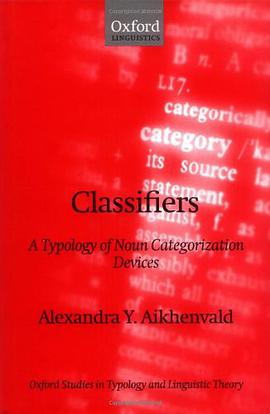

具體描述
Almost all languages have some grammatical means for the linguistic categorization of nouns. Well-known systems such as the lexical numeral classifiers of South-East Asia, on the one hand, and the highly grammaticalized gender agreement classes of Indo-European languages, on the other, are the extremes of a contiuum. They can have a similar semantic basis, and one can develop from the other. Classifiers come in different morphological forms; they can be free nouns, clitics, or affixes. Some languages combine several varieties of classifiers. Different types of classifiers show varying correlations with other grammatical categories. In addition, they differ in their semantics, in the way they develop, and in the way they become obsolescent and disappear. These parameters are the basis for the typology of classifiers presented here. This book is almost certainly the most substantial cross-linguistic account of classifiers ever published. Its range of exemplification includes major and minor languages from every continent (several from the author's own fieldwork).The work combines original research with innovative analysis and will interest typologists, those working in the field of morphosyntactic variation and lexical semantics, and exponents of formal theories who wish to explain the range of linguistic diversity found in natural language.
著者簡介
圖書目錄
讀後感
評分
評分
評分
評分
用戶評價
平均每讀三頁就要暈厥一次
评分平均每讀三頁就要暈厥一次
评分論文用
评分平均每讀三頁就要暈厥一次
评分平均每讀三頁就要暈厥一次
相關圖書
本站所有內容均為互聯網搜索引擎提供的公開搜索信息,本站不存儲任何數據與內容,任何內容與數據均與本站無關,如有需要請聯繫相關搜索引擎包括但不限於百度,google,bing,sogou 等
© 2025 book.quotespace.org All Rights Reserved. 小美書屋 版权所有




















